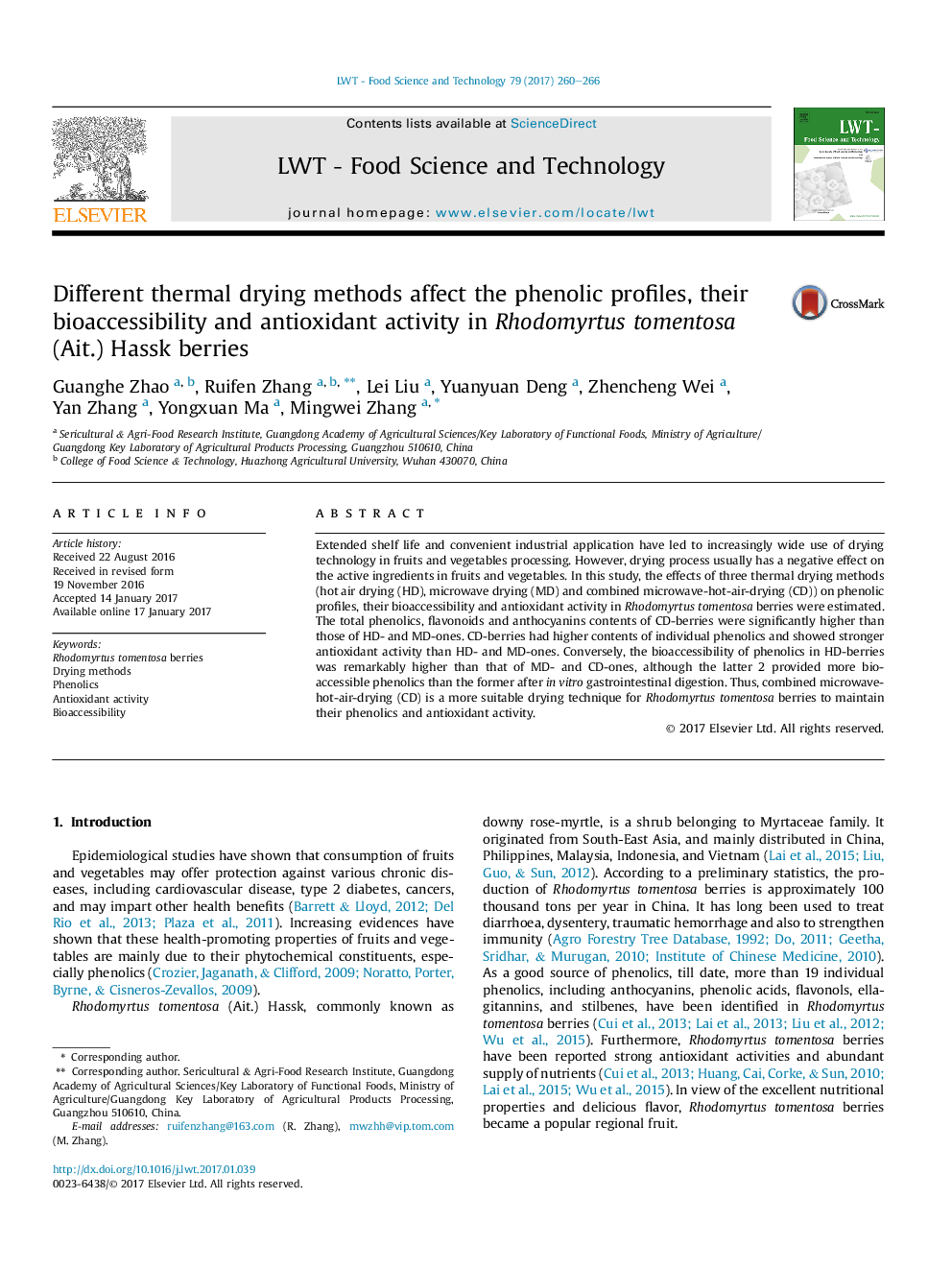| Article ID | Journal | Published Year | Pages | File Type |
|---|---|---|---|---|
| 5768769 | LWT - Food Science and Technology | 2017 | 7 Pages |
â¢Bioactivity of Rhodomyrtus tomentosa berries were analyzed under different drying conditions.â¢Combined microwave-hot-air-dried berries kept more phenolic compounds and higher antioxidant activity.â¢Hot-air-dried berries showed higher phenolic bioaccessibility.
Extended shelf life and convenient industrial application have led to increasingly wide use of drying technology in fruits and vegetables processing. However, drying process usually has a negative effect on the active ingredients in fruits and vegetables. In this study, the effects of three thermal drying methods (hot air drying (HD), microwave drying (MD) and combined microwave-hot-air-drying (CD)) on phenolic profiles, their bioaccessibility and antioxidant activity in Rhodomyrtus tomentosa berries were estimated. The total phenolics, flavonoids and anthocyanins contents of CD-berries were significantly higher than those of HD- and MD-ones. CD-berries had higher contents of individual phenolics and showed stronger antioxidant activity than HD- and MD-ones. Conversely, the bioaccessibility of phenolics in HD-berries was remarkably higher than that of MD- and CD-ones, although the latter 2 provided more bioaccessible phenolics than the former after in vitro gastrointestinal digestion. Thus, combined microwave-hot-air-drying (CD) is a more suitable drying technique for Rhodomyrtus tomentosa berries to maintain their phenolics and antioxidant activity.
